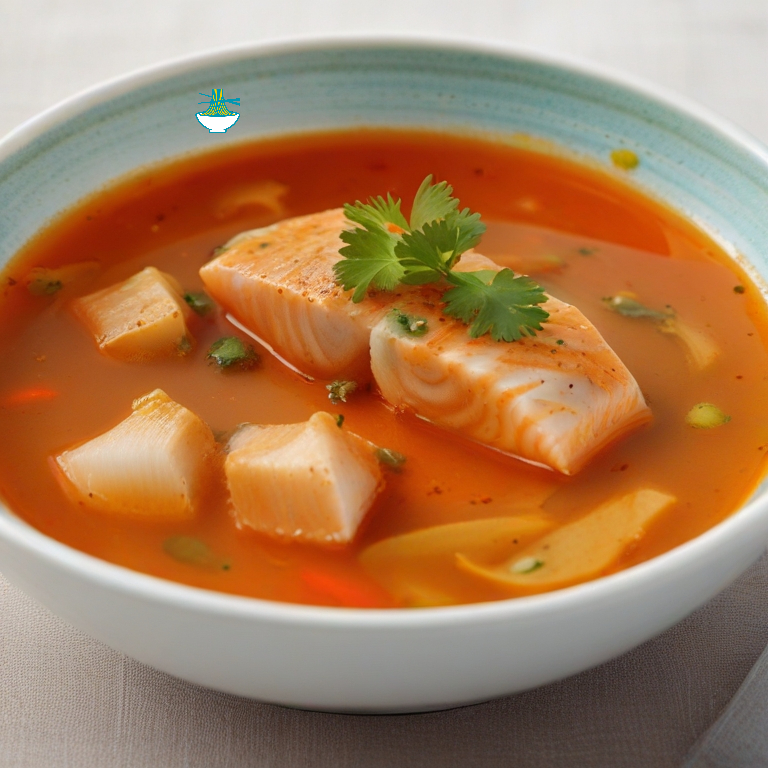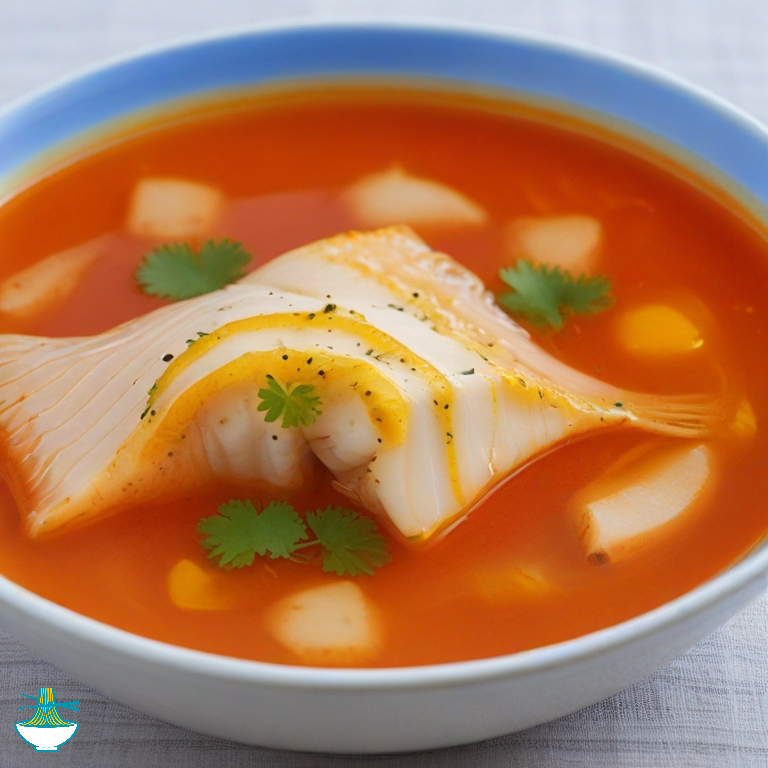Indulge in the flavors of the Caribbean with Guadeloupe's beloved culinary delight, Blaff de Poisson. This traditional dish embodies the essence of the archipelago, blending fresh seafood with vibrant spices and local herbs to create a culinary masterpiece. Originating from the fusion of African, French, and Indigenous influences, Blaff de Poisson offers a symphony of tastes and textures that tantalize the palate.
Picture yourself seaside, where the catch of the day is transformed into a mouthwatering symphony of flavors. Tender fish, typically grouper or snapper, is gently poached in a fragrant broth infused with lime juice, garlic, onions, and Scotch bonnet peppers. The result is a delicate balance of tangy citrus, fiery heat, and aromatic herbs that dance across your taste buds with each savory spoonful.
Blaff de Poisson isn't just a meal; it's an experience that celebrates the richness of Guadeloupean culture and its deep connection to the sea. Whether enjoyed as a comforting family meal or savored during a festive gathering with friends, this dish invites you to immerse yourself in the vibrant spirit of the Caribbean.
So, embark on a culinary adventure and treat yourself to the enchanting flavors of Guadeloupe with Blaff de Poisson. With each bite, you'll discover why this iconic dish has become a symbol of island hospitality and culinary excellence.
Ingredients:
- 2 lbs of firm white fish fillets (grouper, snapper, or similar), cut into serving-sized pieces
- 4 cloves of garlic, minced
- 1 onion, thinly sliced
- 2-3 Scotch bonnet peppers, whole or sliced (adjust according to your spice preference)
- 4-5 sprigs of fresh thyme
- 2 bay leaves
- Juice of 4 limes
- 1 cup water
- 1 cup fish or vegetable broth
- Salt and pepper to taste
- 2 tablespoons olive oil
- Chopped fresh parsley for garnish
- Slices of lime for serving

Instructions:
1- In a large bowl, combine the lime juice, minced garlic, sliced onions, thyme sprigs, bay leaves, Scotch bonnet peppers, water, and fish or vegetable broth. Stir well to combine and set aside.
2- Season the fish fillets with salt and pepper on both sides.
3- In a large, deep skillet or Dutch oven, heat the olive oil over medium-high heat.
4- Once the oil is hot, carefully add the seasoned fish fillets to the skillet in a single layer, ensuring they are not overcrowded. Depending on the size of your skillet, you may need to cook the fish in batches.
5- Cook the fish for 2-3 minutes on each side until lightly browned. Remove the fish from the skillet and set aside on a plate.
6- In the same skillet, pour in the marinade mixture that you set aside earlier. Bring the mixture to a simmer over medium heat.
7- Once the mixture is simmering, carefully add the browned fish fillets back into the skillet, ensuring they are submerged in the liquid.
8- Allow the fish to simmer gently in the liquid for about 5-7 minutes, or until cooked through and tender. Be careful not to overcook the fish.
9- Once the fish is cooked, remove the skillet from the heat. Taste the broth and adjust the seasoning with salt and pepper if needed.
10- Serve the Blaff de Poisson hot, garnished with chopped fresh parsley and slices of lime. You can also serve it with a side of rice, boiled plantains, or crusty bread to soak up the flavorful broth.
Enjoy your Guadeloupean Blaff de Poisson!
Nutritional Values :
Firm White Fish Fillets (per 3 oz serving):
- Calories: 80-100 kcal
- Protein: 16-20 g
- Fat: 1-3 g
- Carbohydrates: 0 g
- Other nutrients: Rich in vitamins B12 and D, selenium, and omega-3 fatty acids.
benefits
- Rich source of high-quality protein, essential for muscle growth and repair.
- Contains omega-3 fatty acids, which are beneficial for heart health and brain function.
- Provides vitamins B12 and D, important for energy production and bone health.
Garlic (per clove):
- Calories: 4 kcal
- Protein: 0.2 g
- Fat: 0 g
- Carbohydrates: 1 g
- Other nutrients: Contains small amounts of vitamins C and B6, manganese, and antioxidants.
benefits
- Contains compounds with potent medicinal properties, including allicin, which may help boost the immune system and reduce blood pressure.
- Rich in antioxidants that protect against cell damage and support overall health.
- May have anti-inflammatory and antibacterial effects.
Onion (per medium-sized onion):
- Calories: 44 kcal
- Protein: 1.2 g
- Fat: 0.1 g
- Carbohydrates: 10.4 g
- Other nutrients: Good source of vitamin C, fiber, and various antioxidants.
benefits
- Good source of vitamin C, which supports immune function and collagen production.
- High in fiber, which promotes digestive health and helps regulate blood sugar levels.
- Contains flavonoids and antioxidants that may reduce the risk of chronic diseases.
Scotch Bonnet Peppers (per pepper):
- Calories: 10-20 kcal
- Protein: 0.5-1 g
- Fat: 0.2-0.5 g
- Carbohydrates: 2-4 g
- Other nutrients: Very high in vitamin C, also contains capsaicin, which may have health benefits.
benefits
- Very high in vitamin C, which supports immune health and collagen formation.
- Contains capsaicin, which may help boost metabolism and reduce pain perception.
- Has antioxidant properties that protect cells from damage and inflammation.
Limes (per lime):
- Calories: 20 kcal
- Protein: 0.5 g
- Fat: 0.1 g
- Carbohydrates: 7 g
- Other nutrients: Excellent source of vitamin C and antioxidants.
benefits
- Excellent source of vitamin C, which boosts immune function and promotes skin health.
- Contains antioxidants that may reduce inflammation and protect against chronic diseases.
- Provides citric acid, which may aid digestion and enhance nutrient absorption.
Olive Oil (per tablespoon):
- Calories: 120 kcal
- Protein: 0 g
- Fat: 14 g
- Carbohydrates: 0 g
- Other nutrients: Contains monounsaturated fats and antioxidants, such as vitamin E.
benefits
- Rich in monounsaturated fats, which may help lower bad cholesterol levels and reduce the risk of heart disease.
- Contains antioxidants, such as vitamin E, which protect cells from damage and inflammation.
- May have anti-inflammatory effects and contribute to overall health and well-being.
These values are approximate and can vary depending on factors such as the specific type and preparation of ingredients used.


Comments